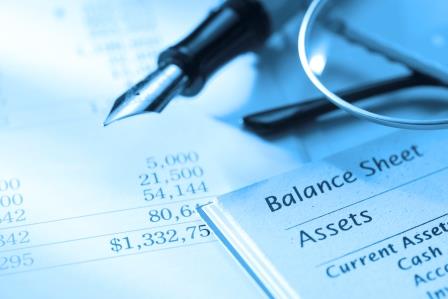
Financial literacy is the possession of a set of skills and knowledge that allows individuals to make informed and effective decisions with regard to their financial resources. It helps them become self- sufficient and achieve financial stability.
This article focuses on investors in stocks who are willing to learn the basics of reading a balance sheet to get an idea of the financial strength of a business firm: on what you are looking for, and what criteria you use to judge the health of a company.
Fundamental analysis is the cornerstone of investing. The biggest part of fundamental analysis involves delving into the financial statements. Also known as quantitative analysis, this involves looking at revenue, expenses, assets, liabilities and all other financial aspects of a company. Fundamental analysts look at this information to gain insight into a company’s future performance to learn about the balance sheet, income statement, and cash flow statement and how they all fit together. Fundamental analysis serves to answer questions, such as:
- Is the company’s revenue growing?
- Is it actually making a profit?
- Is it in a strong-enough position to beat out its competitors in the future?
- Is it able to repay its debts?
- Is the management trying to “cook the books”?
It all really boils down to one question: Is the company’s stock a good investment?
The various fundamental factors can be grouped into two categories: quantitative and qualitative. Quantitative fundamentals are numeric measurable characteristics about a business, viz. revenue, profit, assets, liabilities etc. Qualitative fundamentals are the less tangible factors surrounding a business – things such as the quality of a company’s management, its brand-name recognition, patents or proprietary technology.
In this article I confine myself to quantitative factors.
Financial Statements
Financial statements are the medium by which a company discloses information concerning its financial performance. The three most important financial statements are balance sheet, income statement and cash flow statement.
The Balance Sheet
The balance sheet represents the record of a company’s assets, liabilities and equity at a particular point in time. The balance sheet is named by the fact that a business’ financial structure balances in the following manner:
Assets
There are two main types of assets: current assets and non-current assets. Current assets are likely to be used up or converted into cash within one business cycle – usually treated as twelve months. Three very important current asset items found on the balance sheet are: cash, inventories and accounts receivables.
Investors normally are attracted to companies with plenty of cash on their balance sheets. After all, cash offers protection against tough times, and it also gives companies more options for future growth. Growing cash reserves often signal strong company performance. Indeed, it shows that cash is accumulating so quickly that management doesn’t have time to figure out how to make use of it. A dwindling cash pile could be a sign of trouble. That said, if loads of cash are more or less a permanent feature of the company’s balance sheet, investors need to ask why the money is not being put to use. The cash could be there because management has run out of investment opportunities or is too shortsighted to know what to do with the money.
Inventories are finished products that are not yet sold. As an investor, you want to know if a company has too much money tied up in its inventory. Companies have limited funds available to invest in inventory. To generate the cash to pay bills and return a profit, they must sell the merchandise. Inventory turnover (cost of goods sold divided by average inventory) measures how quickly the company is moving merchandise through the warehouse to customers. If inventory grows faster than sales, it is almost always a sign of deteriorating fundamentals.
Receivables are outstanding (uncollected bills). Analyzing the speed at which a company collects what it is owed can tell you a lot about its financial efficiency. If a company’s collection period is growing longer, it could mean that there are problems ahead. The company may be letting customers stretch their credit in order to recognize greater top-line sales. This can spell trouble later on, especially if customers face a cash crunch. Getting money right away is preferable to waiting for it – since some of what is owed may never get paid. The quicker a company gets its customers to make payments, the sooner it has cash to pay for salaries, merchandise, equipment, loans, and best of all, dividends and growth opportunities.
Non-current assets are defined as anything not classified as a current asset. This includes items that are fixed assets, such as property, plants and equipments. Unless the company is in financial distress and is liquidating assets, investors need not pay too much attention to fixed assets. Since companies are often unable to sell their fixed assets within any reasonable amount of time they are carried on the balance sheet at a cost regardless of their actual value. As a result, it’s possible for companies to grossly inflate this number, leaving investors with questionable and hard-to-compare asset figures.
Liabilities
There are current liabilities and non-current liabilities. Current liabilities are obligations the firm must pay within a year, such as payments to suppliers. Non-current liabilities represent what the company owes in a year or more time. Typically, non-current liabilities represent bank/bond debt.
You usually want to see a manageable amount of debt. When debt levels are falling, that’s a good sign. Generally speaking, if a company has more assets than liabilities, then it is in decent condition. By contrast, a company with large liabilities relative to assets ought to be examined with more diligence. Having too much debt relative to cash flows required to pay for interest and debt repayments is one way a company can go bankrupt.
Look at the Quick Ratio. Subtract inventory from current assets and then divide by current liabilities. If the ratio is 1 or higher, it says that the company has enough cash and liquid assets to cover its short-term debt obligations.
Equity represents what shareholders own, so it is often called shareholder’s equity. As described above, equity is equal to total assets minus total liabilities.
The two important equity items are paid-in capital and retained earnings. Paid-in capital is the amount of money shareholders paid for their shares when the stock was first offered to the public. It basically represents how much money the firm received when it sold its shares. Retained earnings are the money the company has chosen to reinvest in the business rather than pay to shareholders. Investors should look closely at how a company puts retained capital to use and how a company generates a return on it.
The Income Statement
While the balance sheet takes a snapshot approach in examining a business, the income statement measures a company’s performance over a specific time frame (normally a year). The income statement presents information about revenues, expenses and profit that were generated as a result of business’ operations for that period.
Revenue, also commonly known as sales, is generally the most straightforward part of the income statement. Often, there is just a single number that represents all the money a company brought in during a specific time period, although big companies sometimes break down revenue by business segment or geography. The best way for a company to improve profitability is by increasing sales revenue.
Expenses are many kinds; but the two most common are the cost of goods sold (COGS) and selling, general and administrative expenses (SG&A). Cost of goods sold is the expense most directly involved in creating revenue. It represents the costs of producing or purchasing the goods or services sold by the company. SG&A category includes marketing, salaries, utility bills, technology expenses and other general costs associated and also includes depreciation and amortization.
Profit, most simply put, is equal to total revenue minus total expenses.
You can gain valuable insights about a company by examining its income statement. Increasing sales offers the first sign of strong fundamentals. Rising margins indicate increasing efficiency and profitability. It is also important to see whether the company is performing in line with industry peers and competitors. Look for significant changes in revenues, costs of goods sold and SG&A to get a sense of the company’s profit fundamentals.
Statement of Cash Flows
The statement of cash flows represents a record of a business’ cash inflows and outflows over a period of time. Typically, a statement of cash flows focuses on the following cash-related activities:
- Operating Cash Flow (OCF): Cash generated from day-to-day business operations
- Cash from investing (CFI): Cash used for investing in assets, as well as the proceeds from the sale of other businesses, equipment or long-term assets.
- Cash from financing (CFF): Cash paid or received from issuing and borrowing of funds.
The cash flow statement is important because it is very difficult for a business to manipulate its cash situation. There is plenty that aggressive accountants can do to manipulate earnings, but it is tough to fake cash in the bank. For this reason some investors use the cash flow statement as a more conservative measure of a company’s performance.
Ratio Valuation
Financial ratios are mathematical calculations using figures mainly from the financial statements, and they are used to gain an idea of a company’s valuation and financial performance. Some of the most well-known valuation ratios are price-to-earnings and price-to-book. Each valuation ratio uses different measures in its calculations. For example, price-to-book compares the price per share to the company’s book value.
The calculations produced by the valuation ratios are used to gain some understanding of the company’s value. The ratios are compared on an absolute basis, in which there are threshold values. For example, in price-to-book, companies trading below ‘1’ are considered undervalued. Valuation ratios are also compared to the historical values of the ratio for the company, along with comparisons to competitors and the overall market itself.
Conclusion
Whenever one thinks of investing in a company it is vital that they should understand about what they does, its market, the industry in which it operates, how strong the fundamentals of the company are etc. You should never blindly invest in a company.

